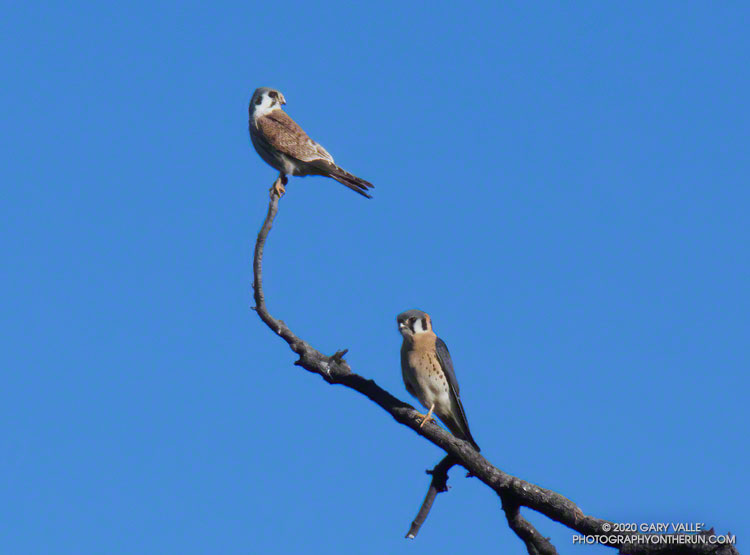
Tuesday is usually a “short run day” for me. On Tuesdays, I usually run a mile or so west on East Las Virgenes Canyon fire road, and then fork left onto another dirt road that descends a short distance, and then climbs steeply up to Lasky Mesa. Once on Lasky Mesa, I check what’s blooming, crawling or flying in the area.
Today, as I was leaving Lasky Mesa, I scanned a grove of valley oaks for a pair of northern harriers I’ve been seeing on the mesa. I didn’t see the harriers, but another pair of much smaller raptors caught my eye.
The male and female American kestrels were perched at the top of a valley oak tree, about 25 yards away. At that distance, they were difficult to positively ID, and nearly beyond the reach of my compact camera.
Usually a kestrel will fly from a perch as soon as it spots me, but this time the pair cooperated. I stopped running, grabbed the camera from my pack, and took a couple of photos. The female kestrel is perched above the male.
Related post: Under a Falcon’s Eye






